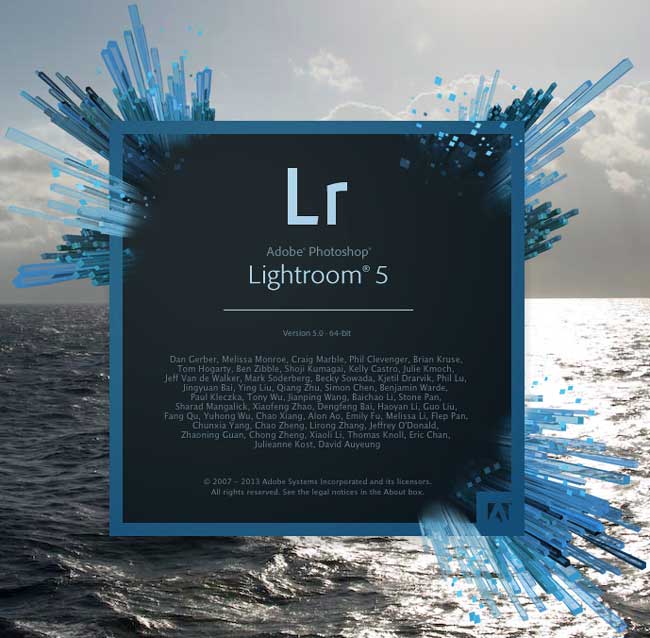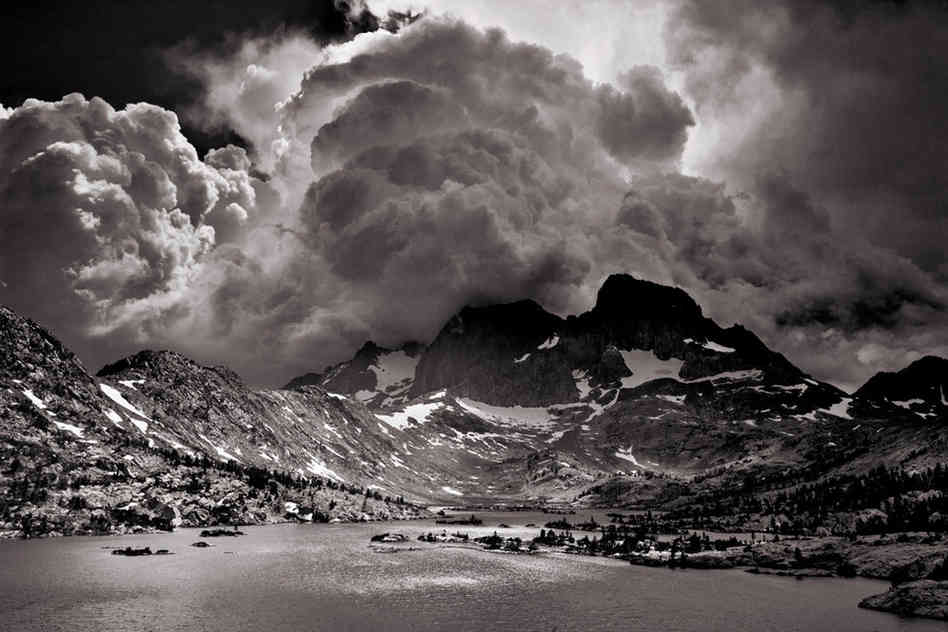 To follow up with the previous post, this is just a brief discussion regarding the use of post processing applications in general such as Lightroom (LR) and the more commonly heard of Photoshop (PS). Before I begin, let me first preface everything by saying this: The truly best way to capture a great image is to first, try and do so with the tool you're woking with in hand - your camera. Proper exposure, shutter speed, iso settings, good focus, creative lighting, white balance, composition and of course subject should be the essence of a good photo and these tools should play paramount roles in taking a decent picture to begin with. Having said that, let me now get to the crux of this post. There are the old school folks who lend themselves to being ridiculed as "film snobs" simply because they're stuck believing that film is superior format to digital and that "real" photographers still use film. Hogwash! Lol. In fact, that breed of snobs is slowly dying out and their cries to be heard are nearly silent. I'm not going to get into the debate of film vs digital. That's not what I want to talk about and it's a whole other discussion. I'm certainly not taking a position and respect both equally. How can one not? I mention the film snobs simply because they give rise to and are very much cousins of the next set of snobs called the "Anti-Photoshop" elite! Now, clearly you know who I'm talking about. Those faux...I mean...photographers who swear that anyone who uses PS is somehow less than a photographer and not to be taken serious. Seriously? Most professionals and enthusiasts realize that as soon as you even hear that, you're pretty much dealing with someone who doesn't make a living from photography and or certainly doesn't understand photography at it's most basic core. To go back to the "old school" for a second, the dark room was essentially the photographers temple of creation. Sure, the image was captured via his camera but it was in the darkroom where the negative was developed and the final image emerged. Pretty certain there's no argument there about that process. The question now becomes, what do you think was going on there in the darkroom? Without going into an entire discussion of how negatives were processed, let me just point out that for the most part, plenty of photographers including many of the greatest were essentially MANIPULATING their images for various effects using a plethora of techniques to do so. Ansel Adams, one of the most famous and respected is no exception. The amount of dodging and burning he did via various techniques was insane yet, his work spoke for itself and was none the less awe inspiring. If you get the chance to read up on him or many of the other greats or even just negative processing in general, you'll quickly understand how Photoshop, is nothing new and simply the modern equivalent of the darkroom used for digital files. Which brings me back to modern times and this post. You can't escape PS! It's a tool to deal with the processing of your images once they've been captured. So often, the amateur "wannabe purists" believe PS is nothing more than horrible skin retouching and making an image fake. While it's possible to go overboard with post processing, and so many people do, many of the fundamentals can be absolute necessities in finalizing a great image. Example: When working in studio and there are massive amounts of light being thrown in the face of a model via strobes, even with clean, shadowless, flattering light from say a beauty dish, tiny imperfections and flaws are made that much more noticeable. Especially when you're shooting with such high resolution cameras these days It's just the way it is. In real life you can look at someone who has gorgeous skin and not see anything but....gorgeous skin. However, shine a bright light in their face and suddenly you see things undetectable under normal lighting scenarios. I've had clients come in and before we even shoot they're telling me about a pimple, a birth mark or some scar that they'd like removed in the final image. That's not a problem and certainly not against the rules of real photography. More important than vanity, there are tons of other corrections and edits that need to be done such as color correction, white balance or lens distortion issues. Again, best bet is to just get it all perfect IN camera the first time but that's not always the case. Beyond technical corrections and vanity, let's not forget the artistic options. (Again, I refer you to Ansel Adams and his dodging and burning. ) As a photographer using such programs as PS and LR, you have the option to take images you've created and extend their creative impact in whatever ways you see fit. Should PS or LR be the crutch for poor images? Should aspiring photographers spend less time understanding technique and how to capture great images and spend most of their time learning to use processing programs instead? Certainly not! Don't get me wrong, I see way too many images that are so retouched the skin looks as if it's just melted silly putty stretched over a person. Then there's the overuse of the gimmicky filters via Instagram, Hispstamatic and similar apps. They're fun when used sparingly here and there but can be boring used over and over again. Trust me, I'm 100% for shooting images and having to do nothing to them in post other than maybe a crop and resize for whatever medium. But, that's not always realistic. So, at the end of the day I say, if you're even trying to take yourself mildly serious as a photographer, you need to not only learn your camera and lighting, but you need to learn the processing of your images. You need to invest in and study, practice, learn and try to master these applications and make them part of your professional tool kit. PS and LR can play a substantial role in a photographers life outside of just editing. Take the time to see how they can be added to and enhance your photograph process.
To follow up with the previous post, this is just a brief discussion regarding the use of post processing applications in general such as Lightroom (LR) and the more commonly heard of Photoshop (PS). Before I begin, let me first preface everything by saying this: The truly best way to capture a great image is to first, try and do so with the tool you're woking with in hand - your camera. Proper exposure, shutter speed, iso settings, good focus, creative lighting, white balance, composition and of course subject should be the essence of a good photo and these tools should play paramount roles in taking a decent picture to begin with. Having said that, let me now get to the crux of this post. There are the old school folks who lend themselves to being ridiculed as "film snobs" simply because they're stuck believing that film is superior format to digital and that "real" photographers still use film. Hogwash! Lol. In fact, that breed of snobs is slowly dying out and their cries to be heard are nearly silent. I'm not going to get into the debate of film vs digital. That's not what I want to talk about and it's a whole other discussion. I'm certainly not taking a position and respect both equally. How can one not? I mention the film snobs simply because they give rise to and are very much cousins of the next set of snobs called the "Anti-Photoshop" elite! Now, clearly you know who I'm talking about. Those faux...I mean...photographers who swear that anyone who uses PS is somehow less than a photographer and not to be taken serious. Seriously? Most professionals and enthusiasts realize that as soon as you even hear that, you're pretty much dealing with someone who doesn't make a living from photography and or certainly doesn't understand photography at it's most basic core. To go back to the "old school" for a second, the dark room was essentially the photographers temple of creation. Sure, the image was captured via his camera but it was in the darkroom where the negative was developed and the final image emerged. Pretty certain there's no argument there about that process. The question now becomes, what do you think was going on there in the darkroom? Without going into an entire discussion of how negatives were processed, let me just point out that for the most part, plenty of photographers including many of the greatest were essentially MANIPULATING their images for various effects using a plethora of techniques to do so. Ansel Adams, one of the most famous and respected is no exception. The amount of dodging and burning he did via various techniques was insane yet, his work spoke for itself and was none the less awe inspiring. If you get the chance to read up on him or many of the other greats or even just negative processing in general, you'll quickly understand how Photoshop, is nothing new and simply the modern equivalent of the darkroom used for digital files. Which brings me back to modern times and this post. You can't escape PS! It's a tool to deal with the processing of your images once they've been captured. So often, the amateur "wannabe purists" believe PS is nothing more than horrible skin retouching and making an image fake. While it's possible to go overboard with post processing, and so many people do, many of the fundamentals can be absolute necessities in finalizing a great image. Example: When working in studio and there are massive amounts of light being thrown in the face of a model via strobes, even with clean, shadowless, flattering light from say a beauty dish, tiny imperfections and flaws are made that much more noticeable. Especially when you're shooting with such high resolution cameras these days It's just the way it is. In real life you can look at someone who has gorgeous skin and not see anything but....gorgeous skin. However, shine a bright light in their face and suddenly you see things undetectable under normal lighting scenarios. I've had clients come in and before we even shoot they're telling me about a pimple, a birth mark or some scar that they'd like removed in the final image. That's not a problem and certainly not against the rules of real photography. More important than vanity, there are tons of other corrections and edits that need to be done such as color correction, white balance or lens distortion issues. Again, best bet is to just get it all perfect IN camera the first time but that's not always the case. Beyond technical corrections and vanity, let's not forget the artistic options. (Again, I refer you to Ansel Adams and his dodging and burning. ) As a photographer using such programs as PS and LR, you have the option to take images you've created and extend their creative impact in whatever ways you see fit. Should PS or LR be the crutch for poor images? Should aspiring photographers spend less time understanding technique and how to capture great images and spend most of their time learning to use processing programs instead? Certainly not! Don't get me wrong, I see way too many images that are so retouched the skin looks as if it's just melted silly putty stretched over a person. Then there's the overuse of the gimmicky filters via Instagram, Hispstamatic and similar apps. They're fun when used sparingly here and there but can be boring used over and over again. Trust me, I'm 100% for shooting images and having to do nothing to them in post other than maybe a crop and resize for whatever medium. But, that's not always realistic. So, at the end of the day I say, if you're even trying to take yourself mildly serious as a photographer, you need to not only learn your camera and lighting, but you need to learn the processing of your images. You need to invest in and study, practice, learn and try to master these applications and make them part of your professional tool kit. PS and LR can play a substantial role in a photographers life outside of just editing. Take the time to see how they can be added to and enhance your photograph process.
Ansel Adams - From NPR's The Picture Show - Retracing The Steps of Ansel Adams.

